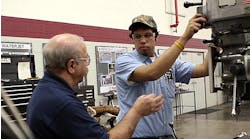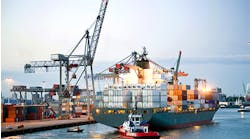The shortest distance between two points is a straight line, on paper, that is, but in the convoluted real world we have to learn to live with such truisms and still reason our way through the contradictions. There are two points contradicting each other in my mind as I as size up the metalcasting market this month: Superior Industries will close an aluminum wheel plant later this year, citing global operating costs; and Brembo S.p.A. will build a $100-million iron foundry in Michigan by 2017.
It’s hard to see how both companies can be operating in the same automotive supply chain. Superior claims to be “the largest manufacturer of aluminum wheels for passenger cars and light-duty vehicles in North America,” but it indicated a comprehensive review of its cost position showed it to be lagging in the global market — meaning lower-cost automotive suppliers outside of the U.S. have a more competitive hand to play.
Brembo sees North America as its largest consumer market and best growth opportunity for cast iron brake products. Its chairman described the greenfield project as “the best possible integration between the different stages of the value chain, replicating the integrated production model that we have adopted for some time now …”
Of course, there are many variables between these two points — aluminum versus iron, wheels versus brakes, different product categories, different organizational circumstances, different competition, just to get the list started. It’s tempting to see some link between one closing and one opening, indeed our need for simple explanations often encourages us to impose one where none applies. That’s what truisms do for us.
But it is possible to understand one’s own circumstances, risks, and strengths well enough to establish the clarity we want, and require that the rest of the world recognize us that way. At this early stage, I’ll credit Brembo for such determination as it seeks to establish a vertically integrated manufacturing operation, supplying brake products to North America’s automakers. There may be others in the supply chain seeking to peg their cost structure and position themselves appropriately, scaling back or slowing down, but this is a company with the ability and the determination to define its own terms. Good for them. And good luck with that.
The struggle of individuals against a chaotic universe is a theme as ancient as the Old Testament and Greek mythology, but it endures because the narrative is refreshed every day, certainly in the world’s many conflicts, but more importantly in the problems we take on and the failures we seek to overcome. When everything we don’t understand well seems to line up to defeat us, we have to credit some truth to the results even if we don’t grasp the facts.
Which is why connecting various points of information is only effective if we understand and manage our own circumstances so well that nothing can inhibit us from the goals we set or alter our strategy. Don’t try to make sense of what the rest of the world is doing. Make the rest of the world respond to you.









